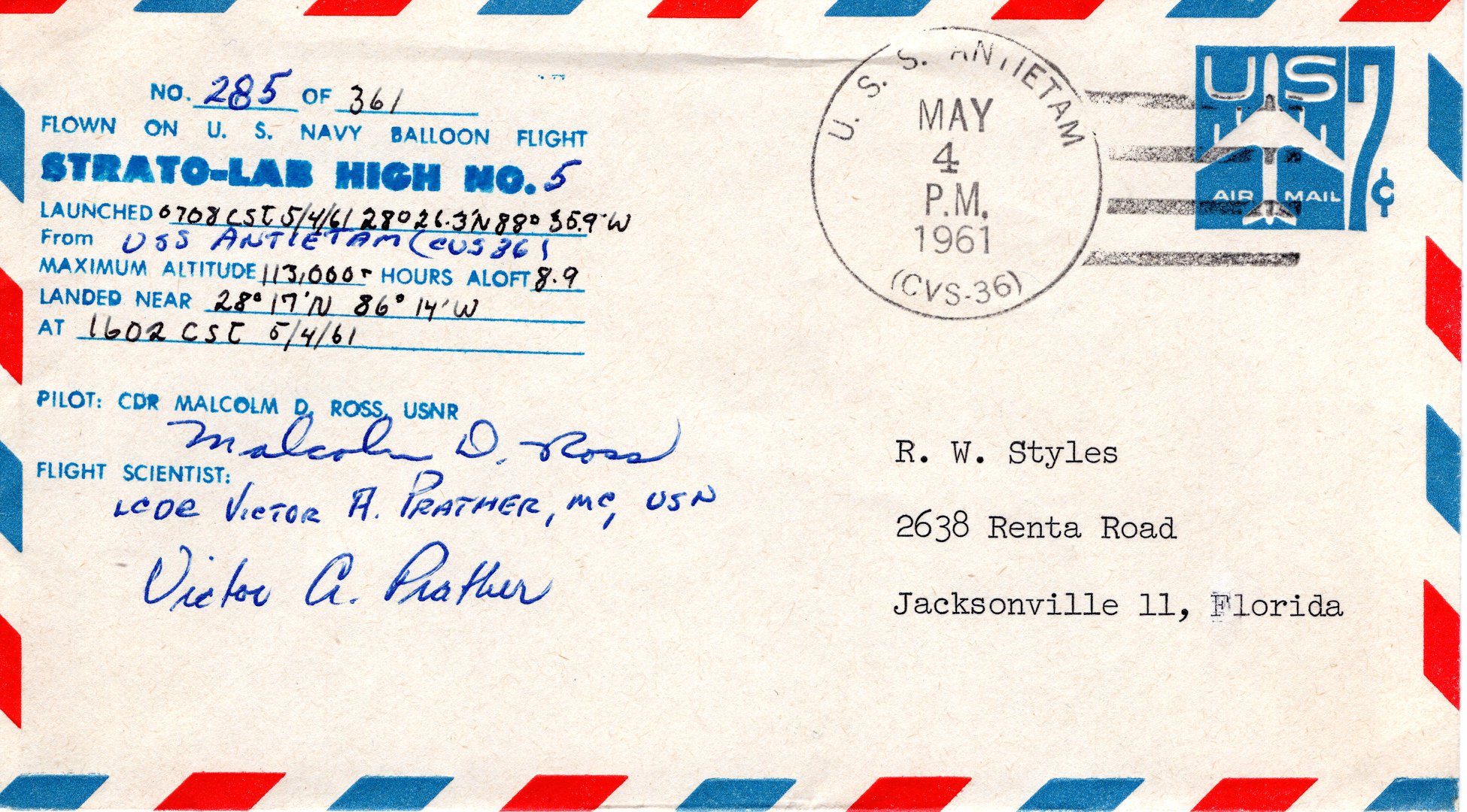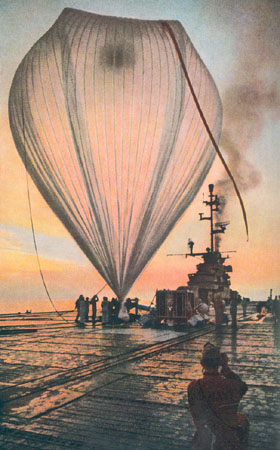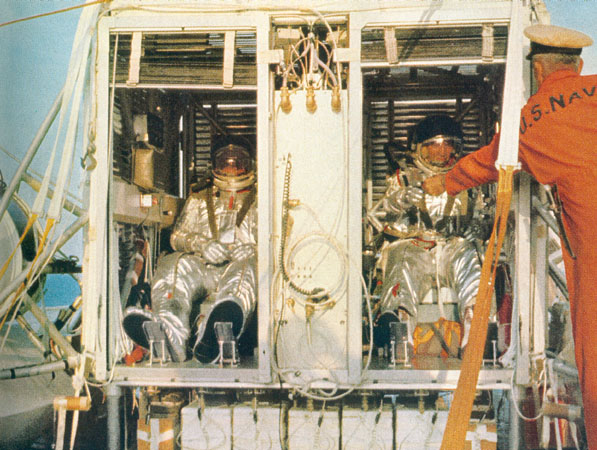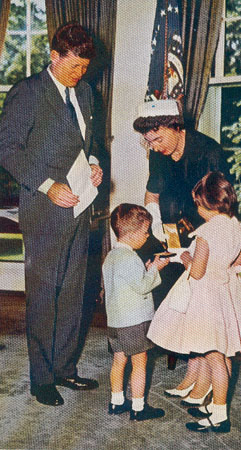Purpose of the flight and payload description
One of the pilot's mission (Victor A. Prather) was to test prototype astronaut flight suits against all forms of wear and pressures they would be subjected to while in earth orbit and in space.
Prather tested spacesuits while under water for leaks, in low-pressure situations, and finally, in very high altitude balloon tests.
Personal telemeter systems for human vital signs and many other devices were tested at ultra-high-altitudes for the first time.
In their historical flight, commander Prather along with Commander Malcolm D. Ross rose from the deck of the aircraft carrier U.S.S. Antietam, used as a movable platform for launching the giant plastic balloon.
They reached an altitude of 113,720 feet or about 21 � miles over the Gulf of Mexico south of Pensacola, Florida - a world record altitude for air balloons which still stand unbroken today.
For nine hours their survival depended on their spacesuits whose actual operating capabilities they were to determine. They were exposed to minus 94 degrees Fahrenheit and air pressures below 0.1 pounds per square inch.
The ascent and descent were highly successful, but Prather lost his life unexpectedly after slipping into the sea while being picked from the amerized gondola. He drowned when his heavy suit was filled with water when he slipped from the rescue helicopter harness.
His achievement was a direct contribution to man's conquest of space. Alan Shepard later went into sub-orbital flight with the certain knowledge that his space suit could withstand the extremes of the upper atmosphere.
Some time later President Kennedy phoned and then received his widow, Virginia Merritt Prather, and her children, at the White House to present the Navy's Distinguished Flying Cross awarded to Prather for "heroism and extraordinary achievement". Also as a result of his accident, the Navy put divers in the water on all subsequent space capsule recoveries in case an astronaut got into trouble as did Prather.
Details of the balloon flight
Balloon launched on: 5/4/1961
Launch site: USS Antietam (CV-36)
Balloon launched by: Winzen Research Inc.
Balloon manufacturer/size/composition: Zero Pressure Balloon Winzen
Balloon serial number: PA-290.75-100-NSC-01-6
Flight identification number: WRI 887
End of flight (L for landing time, W for last contact, otherwise termination time): 5/4/1961
Balloon flight duration (F: time at float only, otherwise total flight time in d:days / h:hours or m:minutes - ): ~ 11 h
Payload weight: 2400 pounds
Postal cover issued on launch day commemorating the flight

External references
- In Silent Awe: America's Day-Long Record-Holders America Space website
- Into the Stratosphere History Up Close, November 15, 2012
- Into the Stratosphere Naval Aviation Museum website
- Stratolab V gondola on display National Naval Aviation Museum
- Stratolab, an Evolutionary Stratospheric Balloon Project - an article by Gregory Kennedy
- Victor A. Prather memorial Digital Collections and Archives at Tufts University
- World record balloon flight set by navy at 113,739.9 feet Patriots Point website
86If you consider this website interesting or useful, you can help me to keep it up and running with a small donation to cover the operational costs. Just the equivalent of the price of a cup of coffee helps a lot.







